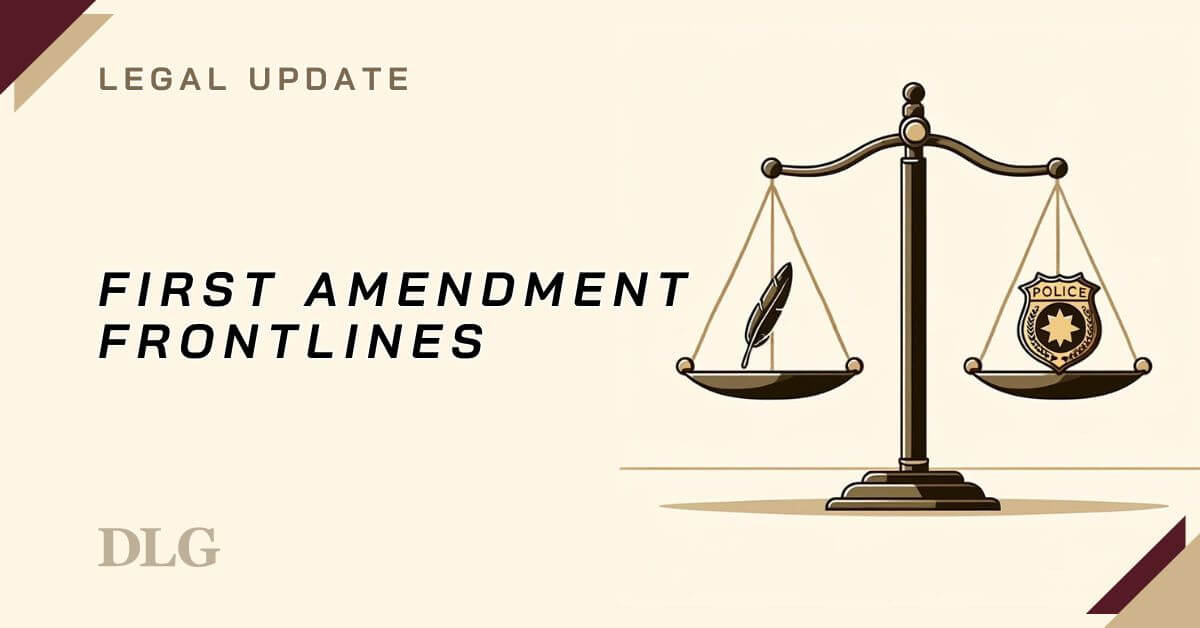Today, we will look at a recent Section 1983 lawsuit[1] against members of the Kansas City, Missouri Tactical Team and their use of a Flash/Sound Diversionary Device. The 8th Circuit was one of the increasingly few circuit courts that had not ruled on the use of these devices, so for those of you working in Arkansas, Iowa, Minnesota, Missouri, Nebraska, North Dakota and South Dakota, the 8th Circuit has provided guidance on the use of these devices.
FACTS
Kansas City PD investigators were investigating a homicide and learned that the victim’s cell phone was missing. The detectives identified a general area where the cell phone might be and focused in on Lee Charles as a subject in the case. Detectives applied for a search warrant to search the residence where Charles was thought to be living. The warrant was issued but before the warrant was served, Charles was arrested at another location.
Thinking that the phone and other evidence might still be at the house, the detectives contacted the KCPD Tactical Response Team to execute the search warrant. Two hours later the Team met to conduct an Operational Briefing where they learned that Charles was already in custody. Several Team members then drove by the house to confirm the address.
The Team then approached the house, knocked and announced they had a search warrant. There was conflicting testimony as to what happened next– some Team members claim a woman came to the door and waved keys in the air, while other members claim the woman opened the inner door but then began backing up. In any event, there is no dispute that Team members forced entry and threw a Flash Sound Diversionary Device into the living room. The detonation caught the living room drapes on fire and the SWAT team had to remove the drapes from the house. When the smoke and dust settled the officers found Carla Brown age 24, Laverne Charles age 84, Leona Smith age 68 and a 2- year old girl referred to here as “Z.J.” sitting in the living room.
No phone or other evidence was recovered and detectives at the scene learned that Charles had been told to leave the house several months earlier.
The child “Z.J.” was diagnosed as suffering from PTSD and other developmental issues related to the detonation of the device. Through her mother Je’Tuan Jones, the child brought suit against the detectives, tactical team members, and Kansas City Board of Police Commissioners claiming that the case had not been sufficiently investigated, information had been improperly left out of the search warrant and the tactics used by the Tactical Team constituted 4th Amendment violations. The defendants moved for summary judgment based on qualified immunity. The district court denied the motion and this appeal followed.
8th Circuit Findings
The defendants claimed that they were entitled to qualified immunity since there was no 4th Amendment violation or, in the alternative, it was not clearly established that the use of the diversionary device under these circumstances was a violation of 4th Amendment protections. The 8th Circuit disagreed.
While the court acknowledged that it had not ruled on a case involving diversionary devices, there were a number of appellate courts that had addressed this issue. The court went on to cite cases in the Second, Seventh, Ninth and Eleventh circuits where the use of diversionary devices in similar situations was found unreasonable. As the court stated,
The “clearly established” requirement of qualified immunity provides officers with ample room for honest mistakes, but the SWAT team officers’ conduct falls outside even this generous standard. First, use of the flash-bang grenade was unreasonable under all of the relevant case law. Second, it would have been obvious to any reasonable officer that the use of the flash-bang grenade under those circumstances was unreasonable.
Following factors addressed in the other circuits, the court determined that the use of the diversionary devices could be reasonable where it is likely that officers will encounter an individual known to be armed or with a history of violence, or officer safety considerations require an element of speed and surprise. The factors present here did not support the use of the device. The suspect was already in custody, there was no information that anyone at the house was a potential threat and officers had failed to ascertain whether innocent persons or children would be present at the house. Under these circumstances “whether the use of the flash-bang grenade was reasonable is not a close question”.
The appellate court affirmed the district court ruling denying qualified immunity for the Team members.
WRAP UP
On a brighter note, the 8th Circuit did reverse the district court with respect to the detectives. The appellate court ruled that the detectives were entitled to qualified immunity because information omitted from the search warrant was not material and their decision to call the SWAT team did not violate clearly established law even if the decision was unreasonable.
If there is one principle we have repeated over and over again it is this – every tool in the police tool-box has its place and use. This includes tactical teams. While they are indispensable in certain situations, they are not a “one-size-fits-all” item. Whether you use our directive system or have drafted your own directives it is important that your policies layout clear guidance for the use of tactical teams including the use of a Threat Assessment for all warrant executions. This will help you objectively evaluate and document whether the incident rises to a level necessary to activate those resources.
Additionally, whether you participate with a regional tactical team or have your own in- house unit it is important for all command staff and team members to be up to speed on legal updates and follow a tactical team operations manual that incorporates best practices and NTOA standards.
Z.J. vs. Kansas City Board of Police Commissioners, 2019 US App LEXIS 23205 (8th Cir July 2019) ↑



